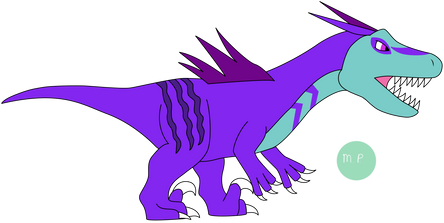HOME | DD
 sylveon2001 — Futabasaurus
sylveon2001 — Futabasaurus

Published: 2020-11-01 05:16:33 +0000 UTC; Views: 4363; Favourites: 44; Downloads: 0
Redirect to original
Description
Here I draw a Futabasaurus, in the colors of the Futabasaurus from the king dinosaur series,
based on fossil evidence of what it might have actually looked like .
The size of Futabasaurus has been estimated within the range of 6.4–9.2 metres (21–30 ft) in length and 700 kg (1,500 lb) in body mass.
Wow, this is hands down the most difficult prehistoric reptile I have ever made, essentially painting it and rebuilding the fossil based design.
The past existence of plesiosaurs is evident from the wealth of fossilized skeletal remains unearthed worldwide. From the skeletons and from our knowledge of structure and function of various body types from presently living animals, these creatures have been reconstructed, to give us an idea of their appearance and how they may have lived.
Plesiosaurs were marine dwelling reptiles, and based on skeletons found to date they ranged in size from more than 2 meters (7 feet) for Plesiosaurus to about 14 meters (46 feet) for Elasmosaurus.
The order Plesiosauria has been divided into two Superfamilies: Plesiosauroidea, such as Cryptoclidus (sometimes spelt Cryptocleidus, , characterized by long necks, with 28–71 vertebrae, and small heads, and Pliosauroidea, whose members had large heads and short necks with as few as 13 vertebrae. A huge pliosaur was Kronosaurus , whose skull alone was 2.4 meters (8 feet) long.
Although people call this class of marine reptiles "marine dinosaurs," plesiosaurs were not dinosaurs. None of these other extinct groups shared the characteristic upright posture of dinosaurs. That is, they were not saurischians or ornithischians. They weren't sauropods either despite having a long neck.
Plesiosaurs possessed deep bodies and flipper-like limbs unique among marine reptiles, ending in phalanges consisting of five to ten bones . The flippers, shaped like hydrofoils, were moved in large vertical strokes enabling the ‘subaqueous flight’ swimming style similar to sea turtles and penguins. The bones of the pectoral and pelvic girdles formed broad plates on the underside of the body to where the limbs and powerful swimming muscles were attached. A number of dense ventral, costa-like ribs connected the two plates, providing a strong, rigid base for the movement of the flippers . It is also believed that plesiosaurs crawled on to beaches to lay their eggs in a similar manner to turtles, the rigid base providing the necessary support and protection.
A water-type futabasaurus appears in the first and second seasons of Dinosaur King, whom Zoe affectionately named futaba. They both became great friends. The movement card is Futaba Super Cannon, which defeated Ace, Tank and Spiny.
Another futabasaurus appeared in Carnibal chaos, as if it were a submarine for a water ride.
Other futabasaurus appeared in Dinosaur War, when the crazy Seth wanted to turn the present earth into the 'age of dinosaurs'.
In Mesozoic Fusion, Futaba returns to help Spiny against the Jobaria and Foolscap's ophtalmosarus.
In the final chapter, Futaba is seen swimming in the ocean with the broken backlander along with an optalmosaurus and deltadromeus.
There is a user on this page who also made a similar drawing, see it:
www.deviantart.com/artapon/art…

























